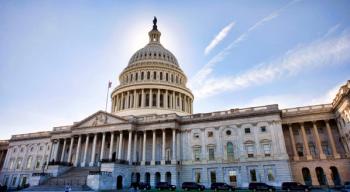
New approaches sought
Dual eligibles cost federal and state governments approximately $120 billion a year.
Dual eligibles cost federal and state governments approximately $120 billion a year.
Proposals for controlling these outlays involve coordination of Medicare and Medicaid payment and coverage policies. Although about 70% of Medicaid beneficiaries are in some kind of managed care arrangement, most Medicaid plans exclude dual eligibles and long-term care. Differences in Medicare and Medicaid reimbursement stymies care coordination and encourages churning.
Consequently, less than 2% of all dual eligibles are in a coordinated care program, according to report from the Medicare Payment Advisory Commission (MedPAC) released in June. SNPs grew initially, but Congress stopped enrollment a few years ago due to concerns the plans were skimping on specialized care needed for duals.
Now policy makers are looking for new coordinated care strategies. Legislation enacted in 2008 requires all new D-SNPs to contract with a state Medicaid agency by the end of next year, and MedPAC proposes applying that policy to all D-SNPs.
The Federal Coordinated Healthcare Office (FCHCO), authorized by the Patient Protection and Affordable Care Act (PPACA), seeks to better align federal and state programs by reducing differences in fee-for-service benefits, prescription drug coverage, cost-sharing, enrollment processes and appeals. The Centers for Medicare and Medicaid Services (CMS) recently proposed to test a new prospective payment model for comprehensive care by health plans and states, plus a shared savings arrangement with state-managed FFS initiatives, FCHCO Director Melanie Bella told the House subcommittee at a June hearing.
SOLUTIONS FOR DUAL POPULATION
The Center for Medicare and Medicaid Innovation, also created by PPACA, is piloting care coordination for dual eligibles by state agencies that assume risk for providing full benefits. CMS has awarded contracts worth up to $1 million each to 15 states.
Similarly, the Association of Community Affiliated Plans and Medicaid Health Plans of America are promoting strategies to reduce costs by transitioning dual eligibles into fully integrated, capitated programs. Some legislators want to extend Medicaid drug rebates to Medicare drug plans serving dual eligibles, which would yield an estimated $50 billion in annual savings.
MedPAC plans to explore whether automatic enrollment can help increase SNP participation. Care coordination can occur within FFS Medicare, but MedPAC believes that capitated, risk-based integrated programs can more effectively coordinate acute and long-term services.
Jill Wechsler, a veteran reporter, has been covering Capitol Hill since 1994.
Newsletter
Get the latest industry news, event updates, and more from Managed healthcare Executive.






















































